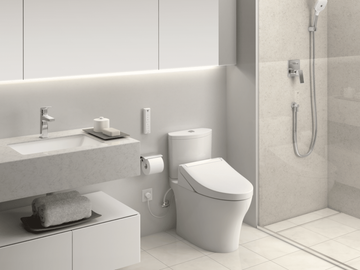If youve recently asked yourself, why is my toilet seat turning black?, youre not alone. This common issue can be a source of frustration and concern for many homeowners. In this article, we will delve into the causes behind this shocking phenomenon and how to address it effectively. Understanding the reasons can lead to better hygiene practices and healthier living spaces.
To begin, a toilet seat turning black often signifies a buildup of mold, mildew, or even rust, depending on the material of the seat. Several factors can contribute to this discoloration. Knowing these reasons will empower you to maintain a cleaner and more sanitary bathroom environment.
:max_bytes(150000):strip_icc()/tightening-a-loose-toilet-seat-2719023-hero-31a7b0bbe0434ea281b2e77bb1aa4e1a.jpg)
Mold and Mildew: The Usual Suspects
Many homeowners might not realize that moisture is the primary culprit when it comes to the question, why is my toilet seat turning black? The frequent exposure to humid conditions, especially in poorly ventilated bathrooms, can lead to mold and mildew growth on the seat. Regular cleaning becomes crucial in preventing these unwanted guests from settling in.
Material Matters: The Role of Toilet Seat Composition
The type of material used for your toilet seat can significantly affect its susceptibility to staining and discoloration. Plastic and wood toilet seats can react differently to moisture and certain cleaning products. If you want to delve deeper into how to choose the right materials, you might check out this guide on toilet seat sizes.
Hard Water: A Hidden Menace
Hard water can leave behind mineral deposits that may contribute to the blackening of your toilet seat. The minerals can react with the toilet seat material, manifesting as unsightly stains. For solutions on maintaining your toilet's hygiene, the following resource is exceptionally helpful: toilet hygiene tips.
Cleaning Practices: Friend or Foe?
Believe it or not, the cleaning materials you use might be exacerbating the problem. While harsh chemicals can remove stains, they can equally damage the surface of the seat, leading to discoloration over time. Make sure to use appropriate cleaners and regularly inspect your toilet seat for early signs of wear. For proper cleaning methods, check out cleaning techniques.
Prevention: Steps to Avoid Black Stains
Now that we've identified the causes, it's essential to focus on prevention. Here are a few strategies:
- Regular cleaning: Clean your toilet seat at least once a week with a gentle cleanser.
- Ventilation: Ensure your bathroom is well-ventilated to reduce moisture buildup.
- Sealant: Consider using a sealant on wood toilet seats to protect against moisture damage.
- Water softeners: If hard water is a problem in your area, a water softener can significantly help.
FAQs About Toilet Seat Discoloration
1. Is it safe to use bleach on my toilet seat?
While bleach can disinfect, it may also cause damage to certain materials, leading to increased discoloration. Always check the manufacturer's instructions before using.
2. Can I prevent stains by using a cover?
Using toilet seat covers can help minimize stains from moisture but remember that they also require regular cleaning.
3. How often should I replace my toilet seat?
Generally, if you notice significant discoloration or damage, it's time to replace your toilet seat. For more on this topic, explore this informative article on heated toilet seats.
As an Amazon Associate, I earn from qualifying purchases.






